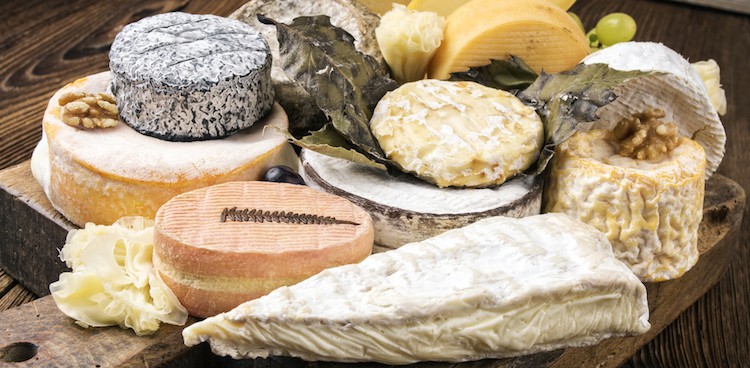
What makes stinky cheese stinky?

It was once put to me that cheesemaking is the controlled spoilage of milk, and one inevitable byproduct of this spoilage is ammonia. Most people know that odor when they smell it, but there are numerous molecules released as cheese ripens, giving each style of cheese its unique bouquet, ranging from green pastures in Alpine cheeses to the infamous “foot” smell of
Époisses. These “stink” molecules are a natural by-product of the breakdown of three specific components of cheese: casein (protein), lipids (fat), and lactose (sugar). Three cheeses in particular are typically viewed as stinky: blue, bloomy rind (
Brie), and washed rind (
Limburger). Each style derives its own particular stink from different organisms the cheesemaker introduces.
Blue cheese achieves its unique appearance and smell by the addition of Penicillium roqueforti. Bloomy or brie-style cheeses gain their easily recognizable fluffy white rind from the presence of Penicillium camemberti. This mold helps to soften the cheese, but it also releases lots of ammonia in the process. The real devil of a stinker has always been washed-rind cheese. Here, the cheesemaker rubs the outside of the cheese (usually with a brine solution) that ultimately results in the growth of Brevibacterium linens, which gives the cheese a characteristic orange color on the surface. This bacterium is fast acting and as such seems to produce the greatest stink of all. Well beyond ammonia, washed-rind cheeses can have sulfurous overtones and will often achieve – to the delight of aficionados – the smell of feet. This is not surprising because it is, in fact, the same bacteria at work in both. Yum!
Feature Photo Credit: “Cheese Plate” by HLPhoto | Shutterstock
Richard Sutton quit the world of banking in 2001 and, armed with a lifelong love of cheese, moved to London and managed Paxton & Whitfield, a 200-year-old cheese shop on Jermyn Street. In 2006 he and his wife, Danielle, returned to the U.S.. and opened the St. James Cheese Company, a grand retail shop in uptown New Orleans filled with Richard’s selection of artisanal cheeses from around the world. Photo by Kristy May





